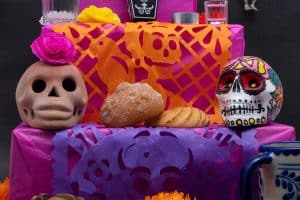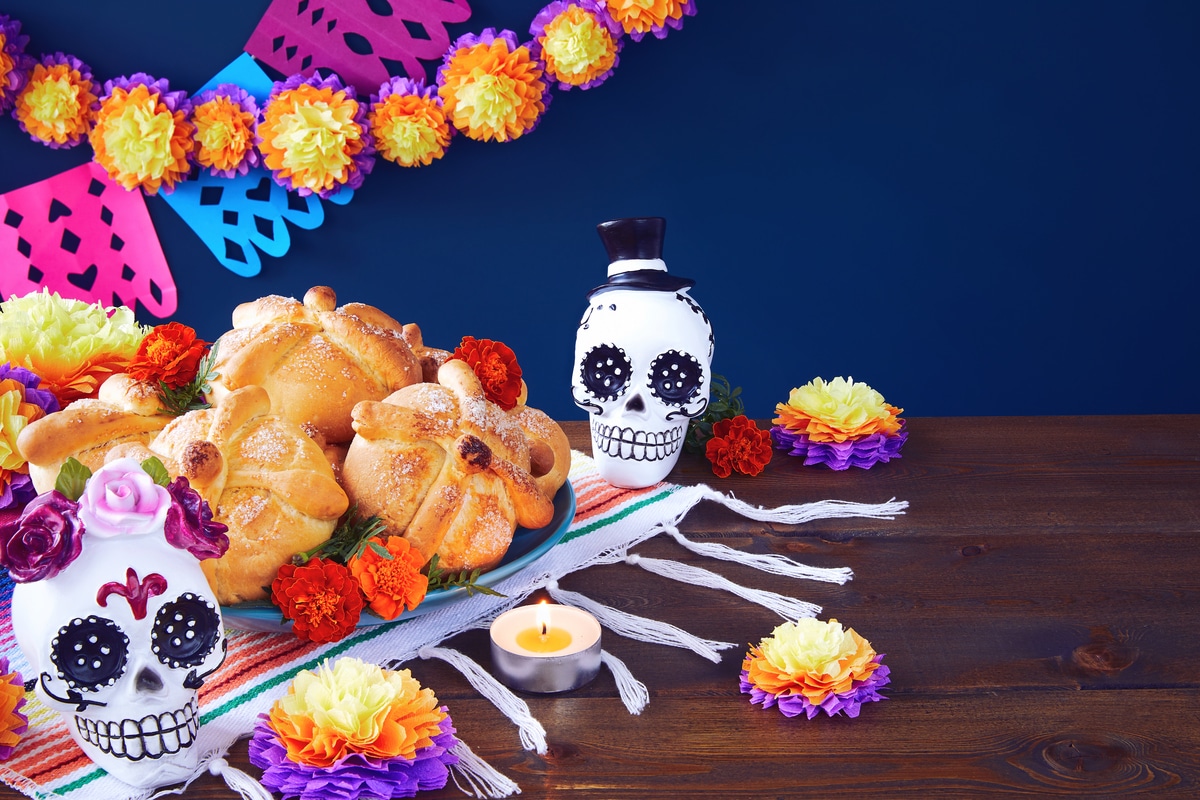Day of the Dead in Mexico: Learn About One of the Most Important Mexican Traditions in Our Country
The Day of the Dead is one of the most important and significant traditions we have in Mexico.
Every year, November 1st and 2nd are the days in which according to our traditions, the loved ones who are no longer with us come from beyond the grave to visit us for a few days and enjoy their favorite food.
It is a very peculiar celebration in which we see death in a respectful but joyful way. The thought of being reunited with those who are no longer here is something we look forward to with great pleasure and fills us with excitement.
Within the celebration of the Day of the Dead, there are different traditions and customs that every good Mexican knows and does. In this blog, we want to tell you a little more about them and their meaning.
Catrina
Catrina is the most iconic character on Day of the Dead. It is a peculiar “skull” that illustrator José Guadalupe Posada created as a way to mock Mexican high society; that’s why the Catrina always dresses elegantly. Her character has become a symbol of the Day of the Dead in Mexico, which is why it is one of the most used costumes in those days.
Catrina contests are held all over the country to reward those who achieve a majestic and impressive costume and makeup of this fascinating character.
Pan de Muerto (Day of the Dead Bread)
Food always plays a significant role in any Mexican celebration, and for the Day of the Dead, we have the delicious “pan de muerto”.
Pan de muerto is only made at this time of the year with the intention that the living enjoy it and the dead find it on their altar. The traditional one is anise flavored, covered with sugar and decorated with strips that simulate bones.

Altar of the Dead
Also called “ofrenda de muertos”, it is the main symbol of this holiday and perhaps the most important tradition of Mexican popular culture.
It’s a very colorful element in which we place flowers, candles, photos of the deceased, and also the food and drink that they enjoyed most in life. The idea is that on November 1st and 2nd, the dead can visit their altar and enjoy everything we have left there for them.
“Ofrenda de Muertos” Elements
If you visit Mexico during this season (late October – early November), you will see ofrendas everywhere. To better understand what they are about and their meaning, here we tell you about the different elements that compose them.
Levels: First, you should know that the ofrendas can have several levels. The traditional one is made of 7 tiers since they symbolize the necessary steps to reach heaven and be able to rest in peace.
Cempasúchil flower: It is the traditional flower of the Day of the Dead and one of the main elements in the ofrendas. Its yellow color evokes the sun, which in Aztec tradition guided the souls of the deceased.
Traditionally, the cempasúchil flower is placed on the floor, from the door of the house to the altar, to serve as a guide for the dead, but it can also be placed only as an ornament in the ofrenda.
Papel picado (tissue paper with cut-out shapes): Papel picado represents the air and gives life and color to the ofrenda.
Pan de muerto: As mentioned above, the pan de muerto was created especially for this celebration. It is placed in the ofrenda to decorate and to be offered as food to the souls that pass near the altar.
Skulls: Skulls are distributed throughout the altar and are considered an allusion to death. They can be made of sugar, chocolate, amaranth, clay or plaster.
By the way, in Barrio, we have a ceramic skull painting workshop. Quite ad hoc for this celebration. Check it out here.
Water: Several glasses of water are usually placed in the altars to quench the traveling souls’ thirst and represent this basic element of nature.
Arch: The arch represents the welcome given to the dead. It can be one or several arches, usually made with flowers or bamboo reeds tied with strings.
Candles: The candles illuminate the path of the dead. They are also a representation of fire.
Incense or copal: These elements serve to guide the sense of smell of the deceased, besides being a form of representation of the air.
Purple color: This color is used in mourning; therefore, we can find it a lot in the Day of the Dead altars.
Favorite food and beverages of the deceased: Tacos, tamales, mole, pozole, beer, tequila; whatever the dead enjoyed most during their lifetime.
Picture of the deceased: And, a picture of the dead… It is usually placed at the top level of the altar.
These elements you will typically see in Day of the Dead ofrendas. But, of course, there are simpler ofrendas and others that are really impressive for their details.
Mexico City’s historic center is an excellent place to admire some of the most beautiful ofrendas in the city. Most museums put up their own altars, as well as restaurants, hotels and in the Zócalo, a megaofrenda is installed.
We look forward to having you at Hostel Barrio to offer you the best stay in the heart of the historic center. Come and enjoy our activities and experiences to discover the Mexican culture, and live closely the wonderful tradition of the Day of the Dead that we are sure you will never forget.
See you soon!







